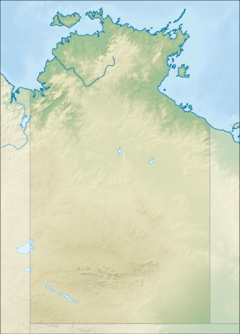Wessel Islands facts for kids
The Wessel Islands are a group of islands in the Northern Territory of Australia. They stretch in a long line from Buckingham Bay and the Napier Peninsula of Arnhem Land towards the northeast. Marchinbar Island is the largest island in this group.
Other islands in the Wessel group include Elcho Island, Rimbija Island (which is the furthest out), Guluwuru, Raragala, Stevens Island, and Howard Island. Some islands, like Bumaga Island and Warnawi Island, are also part of the Cunningham Islands.
Contents
History of the Islands
The Wessel Islands were once the home of the Nango or Yan-nhaŋu people.
Mysterious Marchinbar Coins
Imagine finding ancient coins while fishing! In 1944, an Australian soldier named Morry Isenberg was stationed on Marchinbar Island. One day, while fishing, he found nine old coins buried in the sand.
In 1979, he had these coins checked by experts. Four of them were from the Dutch East India Company. The other five coins were much older and came from the Kilwa Sultanate in Tanzania, Africa. People are still wondering how these medieval African coins ended up all the way in Australia. Another coin, also thought to be from Kilwa, was found on Elcho Island in 2018.
How the Islands Got Their Name
The Wessel Islands were first mapped and named by a Dutch expedition in 1636. This group of explorers sailed from a place called Banda Neira to explore the coasts of New Guinea and the "South Land" (which is now Australia).
They used two small ships for their journey. One of these ships was called the Wesel. The islands were named "Wesel Eilanden" (Wesel Islands) after this ship. About 170 years later, a British explorer named Matthew Flinders decided to keep the name. He just changed it slightly to "Wessel".
Later Times
Sadly, in the late 1700s, many people living on the Wessel Islands became very sick from a disease that arrived from Makassar. By the early 1800s, many of the local Yolngu family groups had been lost.
During World War II, observation posts were set up along the Wessel Islands. A minesweeper ship, the HMAS Patricia Cam, was sunk by a Japanese plane on January 22, 1943. A local Yolngu person, Narritjin Maymuru, shared a story about what happened and how people tried to help the survivors.
About the Environment
"Wessel" is also the name of a special environmental region based on these islands. It is also the name of a protected marine area managed by the Australian government.


